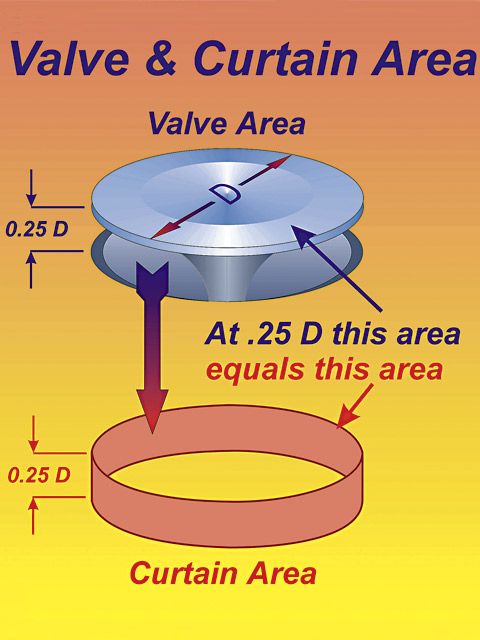as too costs involved here's one SBC 383 builds partial cost list, which may help you remember some of the costs your more than likely over looking
the fact is this engine building remains mostly well understood and known science, a teachable skill,
(for anyone willing to learn what works with a bit of RESEARCH)
I'm fairly sure many of the guys reading through this don,t or have not dealt with, or built enough engines, and been involved with enough of the engine builds to realize the various manufacturers approach building components with a great many different objectives in mind,
component parts vary and careful research and selection is required!
I've always found SCAT and CROWER parts seem to be a good value!
keep in mind the "weakest link in the chain" concept,
Any logical engine builder needs to sellect components with a firm goal in mind and recognize the intended power band and rpm limitations.
need there's not much sense in selecting a rotating assembly that is built to easily handle lets say 1200 hp and 7800 rpm, at 4500 fpm in piston speeds,
if the block main caps walk at much lower stress levels, or if the block your thinking of using it in,will most likely have the caps walk well below that stress level.
nore would it make sense, using such a high dollar rotating assembly if your going to match it with a valve train and hydraulic roller cam that floats valves at 6400 rpm, or heads that reach port stall at 6700 rpm
and a bit of skilled ART , but the biggest and most common, and unfortunately repeated, mistake I've seen made, is guys who fail to ask questions,when they run into areas where they are not dead certain of what needs to be done, and fail to stop and ask questions, understand both the answers and WHY things, MUST be done a certain way for best results!
IF you find you don,t remember how to do something,
or can,t remember the clearance required,
torque specs ,the best parts to be used,
the correct wire color,
or correct sealant or
any thing else,
STOP do a bit of research, and DON,T SCREW IT UP,
a bit of research beats making mistakes .
BECAUSE AVOIDING MISTAKES generally costs a great deal less time and money!
A COUPLE HOURS READING CAN RESULT IN PREVENTING WEEKS OF WASTED WORK AND THOUSANDS OF DOLLARS SAVED!
DON,T GUESS!
get the required info from at least two and preferably three independent sources
keep in mind the concept of the weakest link in a chain, you'll always need to keep that in mind, the best parts are all dependent on other component function, to reach their full potential.
if your cars not geared to operate in the engines most effective power band your working at a big dis-advantage,
if the cam won,t allow the valves to open long and wide enough to maximize the port and runner flow your working at a dis-advantage.
the same concept of inter-dependency will be found in compression, exhaust flow and a dozen other areas!
now the thing that simply amazes me is that the vast majority of those people are absolutely , almost religiously opposed to doing, anything like spending a few hours reading or spending a couple hundred dollars on books on the subject. the fact is that spending the time and money before you get into purchasing components on detailed research into almost any area that might require a person to do in depth research , pays off in big savings , in less mistakes, fewer purchases of miss matched parts and far less assembly mistakes made.
yet many of those same people will take the advise of some 18 -20 year old kid standing on the opposite side of the local auto parts store , or some rather unskilled friend might have suggested as if it was written in granite slabs by the LORD!
this hobby is basically based on your ability to use tools, your ability too think about what each automotive sub system does and how you can make it function to its full efficiency or maybe even improve on what that system does.
keep in mind the change in port volume between something like a 195cc vs the minimally larger 210cc AFR ports is going to have a rather minimal effect on the cars engine performance in the lower and mid rpm ranges but it will be noticeable on the peak power ,
IF THE CAM AND EXHAUST SCAVENGING IS SET UP TO MAXIMIZE UPPER RPM AIR FLOW!
DorianL should be able to comment here, as he previously swapped from TRICK FLOW 195cc to AFR 210 cc heads on his former performance engine build in that recently sold car, and would have noticed the difference in peak power that the minimal port cross sectional area increase provided, and I think he might agree that it had less than a huge effect on his previous engines off idle and lower rpm torque which is commonly the major concern people who have very little hands on experience always seem to be concerned with.
remember its the, cam timing, duration, lift and LSA,and its effect on how effective the exhaust scavenging, is that has a much more noticeable effect on the engines ability to effectively fill the cylinder rather than the port cross sectional area
if your looking for a local machine shop,
in the west palm beach fla area
be damn sure you get all the details in writing
dates prices, details on what needs to be done
delivery dates and take pictures
these guys generally do decent work
first choice (use them fairly often to rebuild heads)
Engine Rebuilders-Palm Beach,
1722 Donna Rd, West Palm Beach, FL 33409
second choice (mostly for block line hone & decking)
Keener's Engine Machine Inc
2517 N Military Trl, West Palm Beach, FL 33409
third choice
these guys get decent reviews but Ive only been there once)
170 Commerce Rd, Suite 1A
Boynton Beach Florida 33426
https://www.mprracingengines.com/
watch the video, and like I stated many times,
its the combo of the engines,
compression,
displacement ,
cam timing
and the exhaust scavenging ,
and the intake manifold design,
NOT the intake port cross sectional area,
that are the most critical factors, in the engines lower rpm and mid rpm torque.
but for damn sure an intake runner port can be small enough to noticeably restrict upper mid range and peak power significantly,
For 5 decades I've heard endlessly about how installing larger free flowing cylinder heads would devastate the engines ability to make any low or mid rpm torque.
especially when Id suggest using a set of smaller 300cc-320cc, aluminum,rectangle port heads on a 496 BBC, or 200 cc-210cc heads on a 406 sbc, I was asked to build
yet on every engine I've ever had built or had some guy ask me to look at, to see why it ran a great deal less impressively than he expected it too,
they brought into my shop its was very obvious (at least to me) that it was the combo of low compression, too little displacement, with too much cam duration ,
a restrictive exhaust or some guy who was trying to save money and continuing to use a stock stall speed torque converter, or retain a badly mis-matched 2.87:1-3.08:1 rear gear ratio,
with an engine that he miss matched components by slapping a large carburetor , and a single plane intake on,an engine that will rarely exceed 6000 rpm, that was the major reason.
if you want an engine combo to run your first step is to logically match the list of components you,ll use to the application,
and that requires you stop, engage the brain and think things through carefully,
and the most common way to screw up the process is to over cam a low compression engine,
have a restrictive exhaust or mis-match the drive train gearing to the engines power band.
Volume (CCs) of Head Gasket
CCs of Head Gasket = Bore x Bore x 12.87 x Thickness of Head Gasket
COMMON SBC INTAKE PORTS
felpro # 1204=Port Size: 1.23" x 1.99"=2.448 sq inches
felpro # 1205=Port Size: 1.28" x 2.09"=2.67 sq inches
felpro # 1206=Port Size: 1.34" x 2.21"=2.96 sq inches
felpro # 1207=Port Size: 1.38" x 2.28"=3.146 sq inches
felpro # 1209=Port Size: 1.38" x 2.38"=3.28 sq inches
felpro # 1255 VORTEC=Port Size: 1.08" x 2.16"-2.33 sq inches
felpro # 1263=Port Size: 1.31" x 2.02"=2.65 sq inches
felpro # 1266=Port Size: 1.34" x 2.21"=2.96 sq inches
felpro # 1284 LT1=Port Size: 1.25 x 2.04''=2.55 sq inches
felpro # 1289 FASTBURN=Port Size: 1.30" x 2.31" 3.00 sq inches
http://users.erols.com/srweiss/calccsa.htm
Your RPM computed from your Cross Sectional Area of 1.95
(the smaller AFR HEADS)
and Bore of 4.03 and Stroke of 3.75 is 5,569.12 .
Your RPM computed from your Cross Sectional Area of 2.05
(the Larger AFR HEADS)
and Bore of 4.03 and Stroke of 3.75 is 5,854.72 .
you,ll barely notice the about 300 rpm shift in the power band on the lower part of rpm range but appreciate it much more on the upper edge of that power curve
heres a chart FROM THE BOOK,HOW TO BUILD BIG-INCH CHEVY SMALL BLOCKS with some common cross sectional port sizes
(measured at the smallest part of the ports)
...........................sq inches........port cc
edelbrock performer rpm ....1.43.............170
vortec......................1.66.............170
tfs195......................1.93.............195
afr 180.....................1.93.............180
afr 195.....................1.98.............195
afr 210.....................2.05.............210
dart pro 200................2.06.............200
dart pro 215................2.14.............215
brodix track 1 .............2.30.............221
dart pro 1 230..............2.40.............230
edelbrock 23 high port .....2.53.............238
edelbrock 18 deg............2.71.............266
tfs 18 deg..................2.80.............250
USE THE CALCULATORS
http://www.rbracing-rsr.com/runnertorquecalc.html
http://www.wallaceracing.com/chokepoint.php
http://www.wallaceracing.com/header_length.php
http://www.superchevy.com/how-to/en...-0902-chevy-engine-port-variations-measuring/
http://www.hotrod.com/articles/choosing-the-right-camshaft/
http://garage.grumpysperformance.com/index.php?threads/bits-of-383-info.38/
you may be amazed to find a great deal of research and testing has been done and theres actually proven facts rather than random guess work to use in planing a well built engine combo
READ THROUGH THIS LINK
http://garage.grumpysperformance.com/index.php?threads/finding-a-machine-shop.321/
http://forum.grumpysperformance.com...=8460&p=32923&hilit=curtain+flow+angle#p32923
http://www.wallaceracing.com/max-rpm2.php
http://www.rbracing-rsr.com/runnertorquecalc.html
http://www.wallaceracing.com/header_length.php
http://garage.grumpysperformance.co...block-cylinder-wall-thickness.976/#post-22976
http://garage.grumpysperformance.co...piston-to-bore-clearance-on-your-block.14251/
http://www.bgsoflex.com/bestheader.html
http://garage.grumpysperformance.com/index.php?threads/what-to-look-for-in-a-good-engine-combo.9930/
http://www.superchevy.com/how-to/engines-drivetrain/sucp-0209-chevy-gm-cylinder-heads/
A VERY USEFUL set of CALCULATORs
http://www.rbracing-rsr.com/runnertorquecalc.html
http://users.erols.com/srweiss/calccsa.htm
http://users.erols.com/srweiss/calcplv.htm
http://users.erols.com/srweiss/calcfps.htm
http://users.erols.com/srweiss/calcacsa.htm
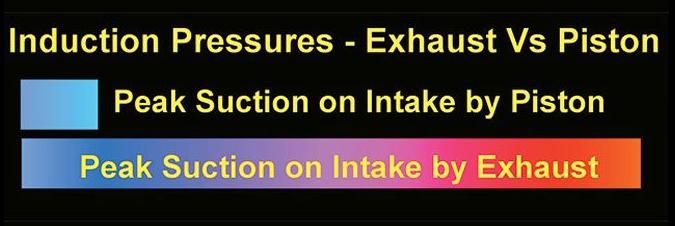
just a bit of info on intake gaskets sizes to match port cross sectional areas
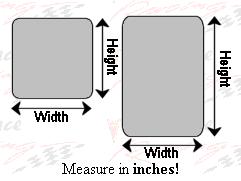
Calculating the valve curtain area
The following equation mathematically defines the available flow area for any given valve diameter and lift value:
Area = valve diameter x 0.98 x 3.14 x valve lift
Where 3.14 = pi (π)
For a typical 2.02-inch intake valve at .500-inch lift, it calculates as follows:
Area = 2.02 x 0.98 x 3.14 x 0.500 = 3.107 square inches
SO lets do a bit of math
a cylinder head with a 2.02' intake valve and a cam with a .450 lift at the valve with a 1.5:1 rocker will in theory produce a valve curtain area of 2.79 sq inches, swapping to a 1.6:1 ratio increases the lift to .480 lift 2.98 sq inches, increasing the available port flow potential at least in theory by about 6%, but keep in mind the port can only flow at full valve lift for the limited time the valve remains at full lift and if the narrowest section of the port cross sectional areas less that the valve curtain area that not the valve restricts flow
reading a few links might help here, but ID also point out that DISPLACEMENT, EXHAUST SCAVENGING EFFICIENCY, AND COMPRESSION RATIO ARE MAJOR FACTORS
example
if a 383 SBC makes 1.3 hp & ft lbs of tq per cubic inch of displacement
thats 498 hp & ft lbs of tq
if a 496 BBC makes 1.3 hp & ft lbs of tq per cubic inch of displacement
thats 645 hp & ft lbs of tq
http://garage.grumpysperformance.co...ing-parts-and-a-logical-plan.7722/#post-51341
take the effort to read the threads ,
buy the suggested books,as they are a good reference,
and pat attention too sub links ,they contain decades of knowledge
http://garage.grumpysperformance.com/index.php?threads/454-bbc-on-the-cheap-well-to-start.11739/
https://www.summitracing.com/search...Default&SortOrder=Ascending&autoview=SKU&ar=1
http://garage.grumpysperformance.co...y-in-building-a-good-engine.11682/#post-54682
http://garage.grumpysperformance.co...train-clearances-and-problems.528/#post-57678
http://garage.grumpysperformance.com/index.php?threads/another-496bbc.5123/page-2#post-46729
http://garage.grumpysperformance.co...k-for-in-a-good-engine-combo.9930/#post-46399
http://garage.grumpysperformance.com/index.php?threads/port-and-runner-math.148/#post-182
http://garage.grumpysperformance.co...reasonable-mild-but-dependable-upgrade.12130/
we ALL learn from mistakes,
and WE ALL make them,
its part of the learning process,
the trick is in simply remembering,
NOT TO REPEAT OR DUPLICATE,
the MISTAKES YOU MAKE,
AND LEARN FROM THE MISTAKES,
YOUR FRIENDS MAKE ALSO!
I got asked why I seem to have a marked preference for building big block engines VS the far more common small block,
you really should get these books and read them before going any further, it will help a good deal
http://www.amazon.com/exec/obidos/A...5079777/sr=2-1/ref=sr_2_1/102-1234339-0571324

http://www.amazon.com/exec/obidos/t...gy_img_2/102-1234339-0571324?v=glance&s=books

http://www.amazon.com/exec/obidos/t...gy_img_2/102-1234339-0571324?v=glance&s=books

http://www.amazon.com/exec/obidos/t..._books_1/102-1234339-0571324?v=glance&s=books

http://www.amazon.com/exec/obidos/t..._books_3/102-1234339-0571324?v=glance&s=books

http://www.amazon.com/exec/obidos/t...f=sr_1_2/102-1234339-0571324?v=glance&s=books

INVESTING THE TIME AND EFFORT IN PURCHASING AND READING A FEW BOOKS WILL BE VERY COST EFFECTIVE
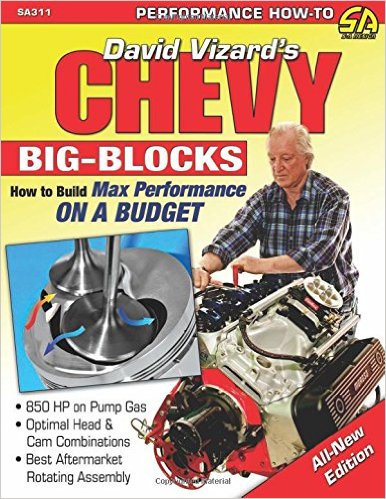
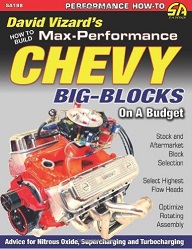
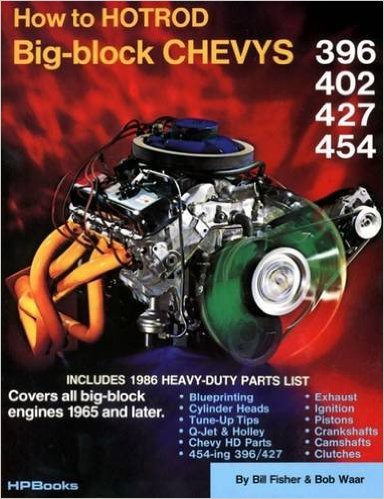
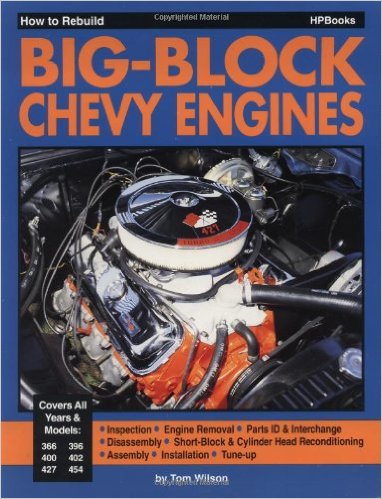
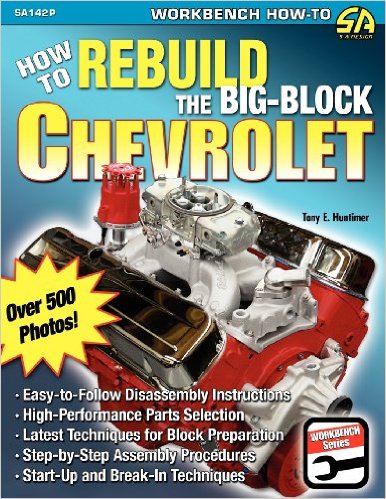
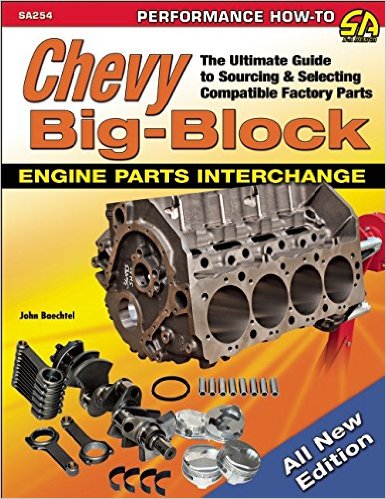
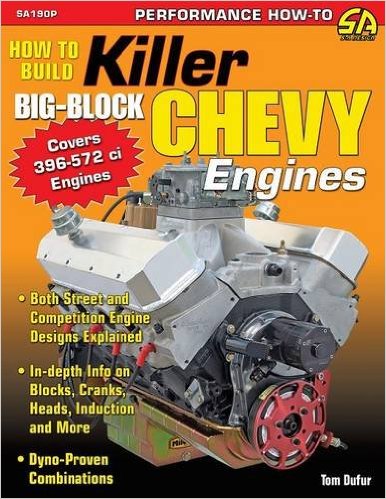
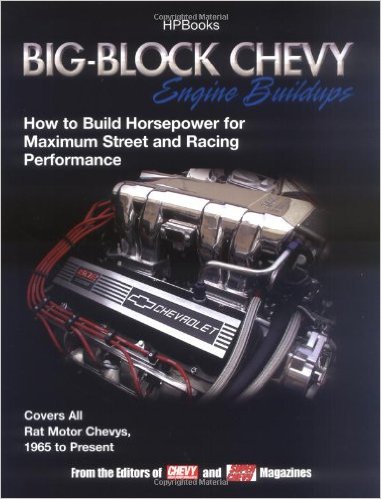
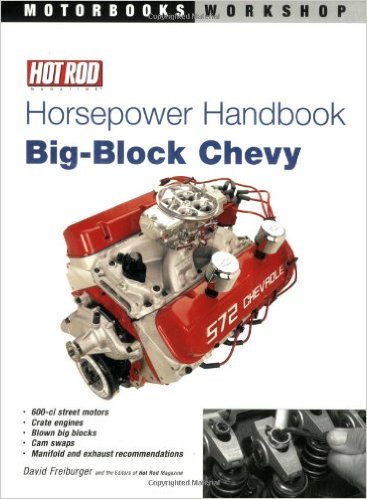
http://www.dragzine.com/tech-stories/en ... ine-block/
"
SMALL BLOCK REFERENCE BOOKS YOULL WANT
start by buying these books and watching the video
http://www.themotorbookstore.com/resmchstvi.html
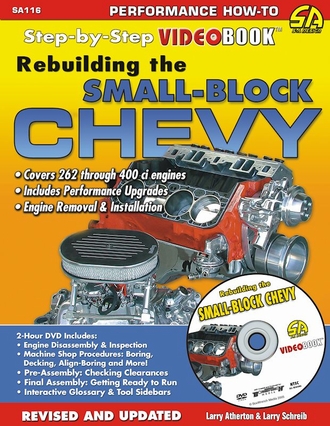
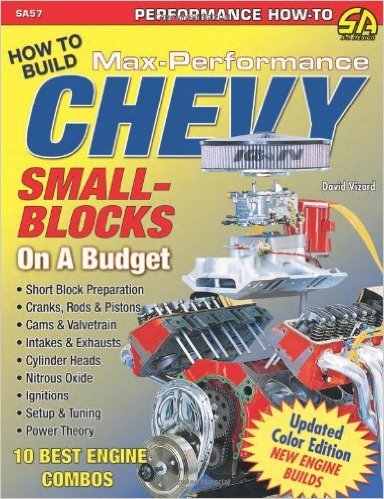
http://www.amazon.com/David-Vizards...8&qid=1456194032&sr=8-5&keywords=DAVID+VIZARD
HOW TO BUILD MAX PERFORMANCE CHEVY SMALL BLOCKS ON A BUDGET by DAVID VIZARD
.
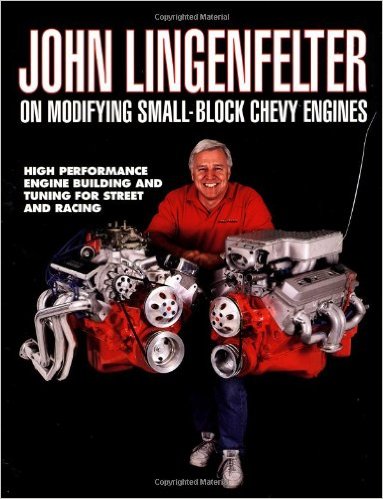
JOHN LINGENFELTER on modifying small-block chevy engines
http://www.amazon.com/Lingenfelter-...=1456193940&sr=8-1&keywords=JOHN+LINGENFELTER
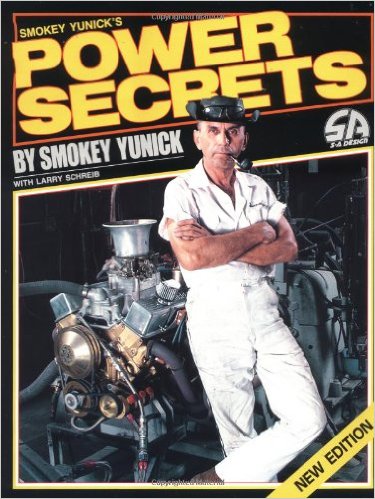
http://www.amazon.com/Smokey-Yunick...2&sr=8-1&keywords=smokey+yunick+power+secrets
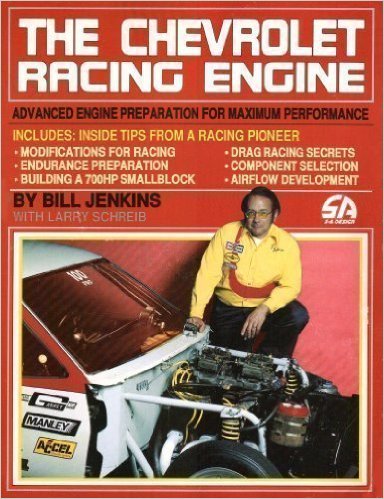
http://www.amazon.com/Chevrolet-Rac...ords=The-Chevrolet-Racing-Engine-Bill-Jenkins
http://garage.grumpysperformance.com/index.php?threads/idea-for-new-calculator.4851/#post-39018
http://garage.grumpysperformance.co...-calculators-and-basic-math.10705/#post-50173
http://garage.grumpysperformance.com/index.php?threads/newbie-here.11767/#post-55608
http://garage.grumpysperformance.com/index.php?threads/a-few-calculator-links.7108/#post-27382
and it is SFI certified, IDEALLY billet, your feet will thank you,
and ideally, you use a blow proof bell housing, thats a good idea
and I would select a 28 lb-36 lb flywheel,for street use.
if its the newer sbc single rear seal block.
be sure its for a single rear seal crank,
and they make 153 and 168 tooth gear designs,
you need to match your application, and your bell housing and starter
also be aware there are internal and externally balanced 383 SBC kits and 5.7" and 6" rod kits,
and some that require a neutrally balanced damper and an externally balanced flywheel
https://www.summitracing.com/parts/...MIyrK1kZaY6QIVFP_jBx05Vw71EAQYAyABEgL4HfD_BwE
as usual, there's a ton of related info in the links and sub links
http://garage.grumpysperformance.co...ectly-installing-bellhousings.584/#post-21691
http://garage.grumpysperformance.com/index.php?threads/a-brief-look-at-clutches.447/
http://garage.grumpysperformance.com/index.php?threads/engine-balancing.3900/#post-10338
http://garage.grumpysperformance.com/index.php?threads/selecting-a-flywheel.1042/#post-1945
http://garage.grumpysperformance.com/index.php?threads/harmonic-balancer.3554/#post-9433
http://garage.grumpysperformance.com/index.php?threads/sfi-tested-parts-sources.3011/#post-7917
related
read the links its worth your time and effort
https://www.engineprofessional.com/EPQ3-2020/mobile/index.html#p=16
http://garage.grumpysperformance.com/index.php?threads/finding-a-machine-shop.321/#post-59253
http://garage.grumpysperformance.co...ing-parts-and-a-logical-plan.7722/#post-68651
http://garage.grumpysperformance.com/index.php?threads/bits-of-383-info.38/page-2#post-61958
http://garage.grumpysperformance.com/index.php?threads/block-prep.125/
http://garage.grumpysperformance.co...ing-a-383-sbc-combo-planing.12168/#post-58778
http://garage.grumpysperformance.co...gine-to-match-the-cam-specs.11764/#post-55651
http://garage.grumpysperformance.com/index.php?threads/bare-minimum-tools.11026/#post-51823
http://garage.grumpysperformance.com/index.php?threads/parts-prep-cleaning.6255/#post-51146
http://garage.grumpysperformance.com/index.php?threads/383-information-overload.11137/#post-49857
http://garage.grumpysperformance.com/index.php?threads/big-block-chevy-info.710/#post-49737
http://garage.grumpysperformance.com/index.php?threads/precision-measuring-tools.1390/#post-52466
http://garage.grumpysperformance.co...ting-started-in-the-car-hobby.339/#post-60187
not all the links relate to your build but may be helpful
https://www.speedwaymotors.com/Moroso-37800-Chevy-Block-Deck-Plug-Kit,590.html
http://www.superchevy.com/how-to/engines-drivetrain/83818-block-plug-basics/
https://www.chevyhardcore.com/tech-...g-101-getting-started-with-your-engine-build/
https://www.chevrolet.com/performance/engine-components/small-block/race-blocks
https://www.hotrod.com/articles/hrdp-1210-chevrolet-350-small-block-comparison/
https://www.dragzine.com/news/engine-machining-101-getting-started-with-your-engine-build/
https://www.chevydiy.com/big-block-chevrolet-engine-step-step-rebuid-machine-shop-guide/
https://www.chevydiy.com/machine-shop-guide-build-chevy-small-block-engines/
http://www.budgetenginerebuilders.com/machining-services/
https://www.steveschmidtracing.com/machine-shop
the fact is this engine building remains mostly well understood and known science, a teachable skill,
(for anyone willing to learn what works with a bit of RESEARCH)
I'm fairly sure many of the guys reading through this don,t or have not dealt with, or built enough engines, and been involved with enough of the engine builds to realize the various manufacturers approach building components with a great many different objectives in mind,
component parts vary and careful research and selection is required!
I've always found SCAT and CROWER parts seem to be a good value!
keep in mind the "weakest link in the chain" concept,
Any logical engine builder needs to sellect components with a firm goal in mind and recognize the intended power band and rpm limitations.
need there's not much sense in selecting a rotating assembly that is built to easily handle lets say 1200 hp and 7800 rpm, at 4500 fpm in piston speeds,
if the block main caps walk at much lower stress levels, or if the block your thinking of using it in,will most likely have the caps walk well below that stress level.
nore would it make sense, using such a high dollar rotating assembly if your going to match it with a valve train and hydraulic roller cam that floats valves at 6400 rpm, or heads that reach port stall at 6700 rpm
and a bit of skilled ART , but the biggest and most common, and unfortunately repeated, mistake I've seen made, is guys who fail to ask questions,when they run into areas where they are not dead certain of what needs to be done, and fail to stop and ask questions, understand both the answers and WHY things, MUST be done a certain way for best results!
IF you find you don,t remember how to do something,
or can,t remember the clearance required,
torque specs ,the best parts to be used,
the correct wire color,
or correct sealant or
any thing else,
STOP do a bit of research, and DON,T SCREW IT UP,
a bit of research beats making mistakes .
BECAUSE AVOIDING MISTAKES generally costs a great deal less time and money!
A COUPLE HOURS READING CAN RESULT IN PREVENTING WEEKS OF WASTED WORK AND THOUSANDS OF DOLLARS SAVED!
DON,T GUESS!
get the required info from at least two and preferably three independent sources
keep in mind the concept of the weakest link in a chain, you'll always need to keep that in mind, the best parts are all dependent on other component function, to reach their full potential.
if your cars not geared to operate in the engines most effective power band your working at a big dis-advantage,
if the cam won,t allow the valves to open long and wide enough to maximize the port and runner flow your working at a dis-advantage.
the same concept of inter-dependency will be found in compression, exhaust flow and a dozen other areas!
now the thing that simply amazes me is that the vast majority of those people are absolutely , almost religiously opposed to doing, anything like spending a few hours reading or spending a couple hundred dollars on books on the subject. the fact is that spending the time and money before you get into purchasing components on detailed research into almost any area that might require a person to do in depth research , pays off in big savings , in less mistakes, fewer purchases of miss matched parts and far less assembly mistakes made.
yet many of those same people will take the advise of some 18 -20 year old kid standing on the opposite side of the local auto parts store , or some rather unskilled friend might have suggested as if it was written in granite slabs by the LORD!
this hobby is basically based on your ability to use tools, your ability too think about what each automotive sub system does and how you can make it function to its full efficiency or maybe even improve on what that system does.
keep in mind the change in port volume between something like a 195cc vs the minimally larger 210cc AFR ports is going to have a rather minimal effect on the cars engine performance in the lower and mid rpm ranges but it will be noticeable on the peak power ,
IF THE CAM AND EXHAUST SCAVENGING IS SET UP TO MAXIMIZE UPPER RPM AIR FLOW!
DorianL should be able to comment here, as he previously swapped from TRICK FLOW 195cc to AFR 210 cc heads on his former performance engine build in that recently sold car, and would have noticed the difference in peak power that the minimal port cross sectional area increase provided, and I think he might agree that it had less than a huge effect on his previous engines off idle and lower rpm torque which is commonly the major concern people who have very little hands on experience always seem to be concerned with.
remember its the, cam timing, duration, lift and LSA,and its effect on how effective the exhaust scavenging, is that has a much more noticeable effect on the engines ability to effectively fill the cylinder rather than the port cross sectional area
if your looking for a local machine shop,
in the west palm beach fla area
be damn sure you get all the details in writing
dates prices, details on what needs to be done
delivery dates and take pictures
these guys generally do decent work
first choice (use them fairly often to rebuild heads)
Engine Rebuilders-Palm Beach,
1722 Donna Rd, West Palm Beach, FL 33409
second choice (mostly for block line hone & decking)
Keener's Engine Machine Inc
2517 N Military Trl, West Palm Beach, FL 33409
third choice
these guys get decent reviews but Ive only been there once)
170 Commerce Rd, Suite 1A
Boynton Beach Florida 33426
https://www.mprracingengines.com/
watch the video, and like I stated many times,
its the combo of the engines,
compression,
displacement ,
cam timing
and the exhaust scavenging ,
and the intake manifold design,
NOT the intake port cross sectional area,
that are the most critical factors, in the engines lower rpm and mid rpm torque.
but for damn sure an intake runner port can be small enough to noticeably restrict upper mid range and peak power significantly,
For 5 decades I've heard endlessly about how installing larger free flowing cylinder heads would devastate the engines ability to make any low or mid rpm torque.
especially when Id suggest using a set of smaller 300cc-320cc, aluminum,rectangle port heads on a 496 BBC, or 200 cc-210cc heads on a 406 sbc, I was asked to build
yet on every engine I've ever had built or had some guy ask me to look at, to see why it ran a great deal less impressively than he expected it too,
they brought into my shop its was very obvious (at least to me) that it was the combo of low compression, too little displacement, with too much cam duration ,
a restrictive exhaust or some guy who was trying to save money and continuing to use a stock stall speed torque converter, or retain a badly mis-matched 2.87:1-3.08:1 rear gear ratio,
with an engine that he miss matched components by slapping a large carburetor , and a single plane intake on,an engine that will rarely exceed 6000 rpm, that was the major reason.
if you want an engine combo to run your first step is to logically match the list of components you,ll use to the application,
and that requires you stop, engage the brain and think things through carefully,
and the most common way to screw up the process is to over cam a low compression engine,
have a restrictive exhaust or mis-match the drive train gearing to the engines power band.
Volume (CCs) of Head Gasket
CCs of Head Gasket = Bore x Bore x 12.87 x Thickness of Head Gasket
COMMON SBC INTAKE PORTS
felpro # 1204=Port Size: 1.23" x 1.99"=2.448 sq inches
felpro # 1205=Port Size: 1.28" x 2.09"=2.67 sq inches
felpro # 1206=Port Size: 1.34" x 2.21"=2.96 sq inches
felpro # 1207=Port Size: 1.38" x 2.28"=3.146 sq inches
felpro # 1209=Port Size: 1.38" x 2.38"=3.28 sq inches
felpro # 1255 VORTEC=Port Size: 1.08" x 2.16"-2.33 sq inches
felpro # 1263=Port Size: 1.31" x 2.02"=2.65 sq inches
felpro # 1266=Port Size: 1.34" x 2.21"=2.96 sq inches
felpro # 1284 LT1=Port Size: 1.25 x 2.04''=2.55 sq inches
felpro # 1289 FASTBURN=Port Size: 1.30" x 2.31" 3.00 sq inches
http://users.erols.com/srweiss/calccsa.htm
Your RPM computed from your Cross Sectional Area of 1.95
(the smaller AFR HEADS)
and Bore of 4.03 and Stroke of 3.75 is 5,569.12 .
Your RPM computed from your Cross Sectional Area of 2.05
(the Larger AFR HEADS)
and Bore of 4.03 and Stroke of 3.75 is 5,854.72 .
you,ll barely notice the about 300 rpm shift in the power band on the lower part of rpm range but appreciate it much more on the upper edge of that power curve
heres a chart FROM THE BOOK,HOW TO BUILD BIG-INCH CHEVY SMALL BLOCKS with some common cross sectional port sizes
(measured at the smallest part of the ports)
...........................sq inches........port cc
edelbrock performer rpm ....1.43.............170
vortec......................1.66.............170
tfs195......................1.93.............195
afr 180.....................1.93.............180
afr 195.....................1.98.............195
afr 210.....................2.05.............210
dart pro 200................2.06.............200
dart pro 215................2.14.............215
brodix track 1 .............2.30.............221
dart pro 1 230..............2.40.............230
edelbrock 23 high port .....2.53.............238
edelbrock 18 deg............2.71.............266
tfs 18 deg..................2.80.............250
USE THE CALCULATORS
http://www.rbracing-rsr.com/runnertorquecalc.html
http://www.wallaceracing.com/chokepoint.php
http://www.wallaceracing.com/header_length.php
http://www.superchevy.com/how-to/en...-0902-chevy-engine-port-variations-measuring/
http://www.hotrod.com/articles/choosing-the-right-camshaft/
http://garage.grumpysperformance.com/index.php?threads/bits-of-383-info.38/
you may be amazed to find a great deal of research and testing has been done and theres actually proven facts rather than random guess work to use in planing a well built engine combo
READ THROUGH THIS LINK
http://garage.grumpysperformance.com/index.php?threads/finding-a-machine-shop.321/
http://forum.grumpysperformance.com...=8460&p=32923&hilit=curtain+flow+angle#p32923
http://www.wallaceracing.com/max-rpm2.php
http://www.rbracing-rsr.com/runnertorquecalc.html
http://www.wallaceracing.com/header_length.php
http://garage.grumpysperformance.co...block-cylinder-wall-thickness.976/#post-22976
http://garage.grumpysperformance.co...piston-to-bore-clearance-on-your-block.14251/
http://www.bgsoflex.com/bestheader.html
http://garage.grumpysperformance.com/index.php?threads/what-to-look-for-in-a-good-engine-combo.9930/
http://www.superchevy.com/how-to/engines-drivetrain/sucp-0209-chevy-gm-cylinder-heads/
A VERY USEFUL set of CALCULATORs
http://www.rbracing-rsr.com/runnertorquecalc.html
http://users.erols.com/srweiss/calccsa.htm
http://users.erols.com/srweiss/calcplv.htm
http://users.erols.com/srweiss/calcfps.htm
http://users.erols.com/srweiss/calcacsa.htm

just a bit of info on intake gaskets sizes to match port cross sectional areas

Calculating the valve curtain area
The following equation mathematically defines the available flow area for any given valve diameter and lift value:
Area = valve diameter x 0.98 x 3.14 x valve lift
Where 3.14 = pi (π)
For a typical 2.02-inch intake valve at .500-inch lift, it calculates as follows:
Area = 2.02 x 0.98 x 3.14 x 0.500 = 3.107 square inches
SO lets do a bit of math
a cylinder head with a 2.02' intake valve and a cam with a .450 lift at the valve with a 1.5:1 rocker will in theory produce a valve curtain area of 2.79 sq inches, swapping to a 1.6:1 ratio increases the lift to .480 lift 2.98 sq inches, increasing the available port flow potential at least in theory by about 6%, but keep in mind the port can only flow at full valve lift for the limited time the valve remains at full lift and if the narrowest section of the port cross sectional areas less that the valve curtain area that not the valve restricts flow
reading a few links might help here, but ID also point out that DISPLACEMENT, EXHAUST SCAVENGING EFFICIENCY, AND COMPRESSION RATIO ARE MAJOR FACTORS
example
if a 383 SBC makes 1.3 hp & ft lbs of tq per cubic inch of displacement
thats 498 hp & ft lbs of tq
if a 496 BBC makes 1.3 hp & ft lbs of tq per cubic inch of displacement
thats 645 hp & ft lbs of tq
http://garage.grumpysperformance.co...ing-parts-and-a-logical-plan.7722/#post-51341
take the effort to read the threads ,
buy the suggested books,as they are a good reference,
and pat attention too sub links ,they contain decades of knowledge
http://garage.grumpysperformance.com/index.php?threads/454-bbc-on-the-cheap-well-to-start.11739/
https://www.summitracing.com/search...Default&SortOrder=Ascending&autoview=SKU&ar=1
http://garage.grumpysperformance.co...y-in-building-a-good-engine.11682/#post-54682
http://garage.grumpysperformance.co...train-clearances-and-problems.528/#post-57678
http://garage.grumpysperformance.com/index.php?threads/another-496bbc.5123/page-2#post-46729
http://garage.grumpysperformance.co...k-for-in-a-good-engine-combo.9930/#post-46399
http://garage.grumpysperformance.com/index.php?threads/port-and-runner-math.148/#post-182
http://garage.grumpysperformance.co...reasonable-mild-but-dependable-upgrade.12130/
we ALL learn from mistakes,
and WE ALL make them,
its part of the learning process,
the trick is in simply remembering,
NOT TO REPEAT OR DUPLICATE,
the MISTAKES YOU MAKE,
AND LEARN FROM THE MISTAKES,
YOUR FRIENDS MAKE ALSO!
I got asked why I seem to have a marked preference for building big block engines VS the far more common small block,
you really should get these books and read them before going any further, it will help a good deal
http://www.amazon.com/exec/obidos/A...5079777/sr=2-1/ref=sr_2_1/102-1234339-0571324

http://www.amazon.com/exec/obidos/t...gy_img_2/102-1234339-0571324?v=glance&s=books

http://www.amazon.com/exec/obidos/t...gy_img_2/102-1234339-0571324?v=glance&s=books

http://www.amazon.com/exec/obidos/t..._books_1/102-1234339-0571324?v=glance&s=books

http://www.amazon.com/exec/obidos/t..._books_3/102-1234339-0571324?v=glance&s=books

http://www.amazon.com/exec/obidos/t...f=sr_1_2/102-1234339-0571324?v=glance&s=books

INVESTING THE TIME AND EFFORT IN PURCHASING AND READING A FEW BOOKS WILL BE VERY COST EFFECTIVE









http://www.dragzine.com/tech-stories/en ... ine-block/
"
SMALL BLOCK REFERENCE BOOKS YOULL WANT
start by buying these books and watching the video
http://www.themotorbookstore.com/resmchstvi.html


http://www.amazon.com/David-Vizards...8&qid=1456194032&sr=8-5&keywords=DAVID+VIZARD
HOW TO BUILD MAX PERFORMANCE CHEVY SMALL BLOCKS ON A BUDGET by DAVID VIZARD
.

JOHN LINGENFELTER on modifying small-block chevy engines
http://www.amazon.com/Lingenfelter-...=1456193940&sr=8-1&keywords=JOHN+LINGENFELTER

http://www.amazon.com/Smokey-Yunick...2&sr=8-1&keywords=smokey+yunick+power+secrets

http://www.amazon.com/Chevrolet-Rac...ords=The-Chevrolet-Racing-Engine-Bill-Jenkins
http://garage.grumpysperformance.com/index.php?threads/idea-for-new-calculator.4851/#post-39018
http://garage.grumpysperformance.co...-calculators-and-basic-math.10705/#post-50173
http://garage.grumpysperformance.com/index.php?threads/newbie-here.11767/#post-55608
http://garage.grumpysperformance.com/index.php?threads/a-few-calculator-links.7108/#post-27382
be sure that FLYWHEEL,you select matches the intended application"cnc blocks" said:Did a budget build for a customer last year used a 880 GM block it was all machined cleaned magged, sonic tested, line honed, stroker clearanced, zero decked to 9.00 (Tom Mobley the intake fit just fine ) bored and plate honed.
Machine work on block 695.00
ARP Main bolt kit 48.00
Scat 9000 series crank 280.00
Scat I beam 6.0 rods with 7/16 bolts 350.00
Wiseco pistons with rings 450.00
Dart SHP 180 64CC heads 1176.00
Internally balance crank 225.00
polish crank 45.00
rod and main bearings 45.00
Performance cam bearings 32.00
Brass freeze plug kit 28.00
Install cam bearings and freeze plugs 60.00
Head gaskets 75.00
ARP head bolts 90.00
GM Hot cam Think it was 238/242 185.00
GM roller lifter kit with dog bones and spider 190.00
8 quart Y pan with pick up 230.00
Melling 10552 oil pump 115.00
Cloyes hex-A-just 136.00
GM balancer 89.00
Size both ends of rods 120.00
Air Gap intake 275.00
With misalliances fasteners and gaskets ETC.
Customer fit his own rings and assembled his own engine.
(roughly 430 hp)
For under 5500.00 the engine seems to be a Kick A$$ piece runs better then I expected.
and it is SFI certified, IDEALLY billet, your feet will thank you,
and ideally, you use a blow proof bell housing, thats a good idea
and I would select a 28 lb-36 lb flywheel,for street use.
if its the newer sbc single rear seal block.
be sure its for a single rear seal crank,
and they make 153 and 168 tooth gear designs,
you need to match your application, and your bell housing and starter
also be aware there are internal and externally balanced 383 SBC kits and 5.7" and 6" rod kits,
and some that require a neutrally balanced damper and an externally balanced flywheel
https://www.summitracing.com/parts/...MIyrK1kZaY6QIVFP_jBx05Vw71EAQYAyABEgL4HfD_BwE
as usual, there's a ton of related info in the links and sub links
http://garage.grumpysperformance.co...ectly-installing-bellhousings.584/#post-21691
http://garage.grumpysperformance.com/index.php?threads/a-brief-look-at-clutches.447/
http://garage.grumpysperformance.com/index.php?threads/engine-balancing.3900/#post-10338
http://garage.grumpysperformance.com/index.php?threads/selecting-a-flywheel.1042/#post-1945
http://garage.grumpysperformance.com/index.php?threads/harmonic-balancer.3554/#post-9433
http://garage.grumpysperformance.com/index.php?threads/sfi-tested-parts-sources.3011/#post-7917
related
read the links its worth your time and effort
https://www.engineprofessional.com/EPQ3-2020/mobile/index.html#p=16
http://garage.grumpysperformance.com/index.php?threads/finding-a-machine-shop.321/#post-59253
http://garage.grumpysperformance.co...ing-parts-and-a-logical-plan.7722/#post-68651
http://garage.grumpysperformance.com/index.php?threads/bits-of-383-info.38/page-2#post-61958
http://garage.grumpysperformance.com/index.php?threads/block-prep.125/
http://garage.grumpysperformance.co...ing-a-383-sbc-combo-planing.12168/#post-58778
http://garage.grumpysperformance.co...gine-to-match-the-cam-specs.11764/#post-55651
http://garage.grumpysperformance.com/index.php?threads/bare-minimum-tools.11026/#post-51823
http://garage.grumpysperformance.com/index.php?threads/parts-prep-cleaning.6255/#post-51146
http://garage.grumpysperformance.com/index.php?threads/383-information-overload.11137/#post-49857
http://garage.grumpysperformance.com/index.php?threads/big-block-chevy-info.710/#post-49737
http://garage.grumpysperformance.com/index.php?threads/precision-measuring-tools.1390/#post-52466
http://garage.grumpysperformance.co...ting-started-in-the-car-hobby.339/#post-60187
not all the links relate to your build but may be helpful
https://www.speedwaymotors.com/Moroso-37800-Chevy-Block-Deck-Plug-Kit,590.html
http://www.superchevy.com/how-to/engines-drivetrain/83818-block-plug-basics/
https://www.chevyhardcore.com/tech-...g-101-getting-started-with-your-engine-build/
https://www.chevrolet.com/performance/engine-components/small-block/race-blocks
https://www.hotrod.com/articles/hrdp-1210-chevrolet-350-small-block-comparison/
https://www.dragzine.com/news/engine-machining-101-getting-started-with-your-engine-build/
https://www.chevydiy.com/big-block-chevrolet-engine-step-step-rebuid-machine-shop-guide/
https://www.chevydiy.com/machine-shop-guide-build-chevy-small-block-engines/
http://www.budgetenginerebuilders.com/machining-services/
https://www.steveschmidtracing.com/machine-shop
Last edited:

